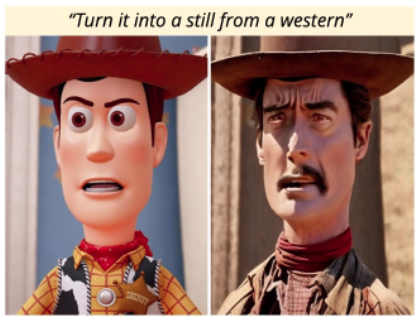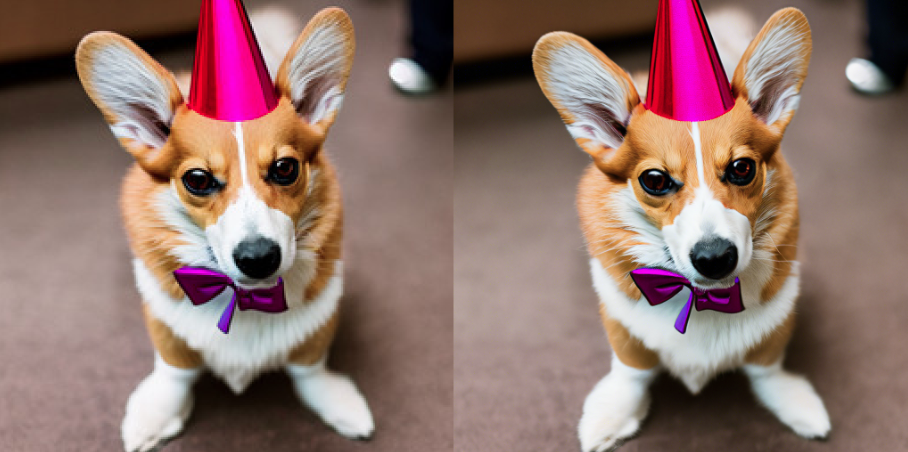gpdm
Maintainer: ariel415el

5

| Property | Value |
|---|---|
| Run this model | Run on Replicate |
| API spec | View on Replicate |
| Github link | View on Github |
| Paper link | View on Arxiv |
Create account to get full access
Model overview
The gpdm model, developed by Ariel Elnekave and Yair Weiss, is a novel image generation algorithm that generates natural images by directly matching the patch distribution of a reference image. This approach differs from traditional GAN-based models like Stable Diffusion which generate images from scratch. Instead, gpdm manipulates and reshuffles patches from the reference image to create new, photorealistic outputs.
Model inputs and outputs
The gpdm model takes in a reference image and generates new images that match the statistical properties of the input. The model supports several tasks, including image reshuffling, retargeting, style transfer, and texture synthesis. Depending on the task, the model accepts additional parameters like content images, width/height factors, and the number of outputs to generate.
Inputs
- Reference Image: The main input image used as a reference for the generation process.
- Content Image: Only required for the style transfer task, this is the image whose content will be used.
- Width/Height Factor: Controls the aspect ratio of the output image for the retargeting task.
- Num Outputs: Specifies how many output images to generate, which can improve quality and diversity.
Outputs
- Generated Images: The model outputs one or more new images that match the statistical properties of the reference image, as specified by the input parameters.
Capabilities
The gpdm model is capable of generating diverse, photorealistic images by directly matching the patch distribution of a reference image. This approach allows the model to capture the intricate structures and patterns present in natural images, resulting in outputs that are more faithful to the original than traditional GAN-based models.
What can I use it for?
The gpdm model has a wide range of potential use cases, from creative image editing to data augmentation. For example, you could use it to generate variations of a single image for a design project, or to create a diverse dataset of images for training other machine learning models. The model's ability to perform tasks like style transfer and texture synthesis also makes it a useful tool for artists and designers.
Things to try
One particularly interesting aspect of the gpdm model is its ability to perform image retargeting, where it can generate a new version of the reference image with a different aspect ratio. This could be useful for adapting images to different display sizes or aspect ratios, without losing the essential characteristics of the original.
Another intriguing use case is the model's potential for image inpainting and completion. By manipulating the patch distribution, it may be possible to fill in missing regions of an image or repair damaged areas, while preserving the overall visual coherence.
This summary was produced with help from an AI and may contain inaccuracies - check out the links to read the original source documents!
Related Models

deoldify_image

398
The deoldify_image model from maintainer arielreplicate is a deep learning-based AI model that can add color to old black-and-white images. It builds upon techniques like Self-Attention Generative Adversarial Network and Two Time-Scale Update Rule, and introduces a novel "NoGAN" training approach to achieve high-quality, stable colorization results. The model is part of the DeOldify project, which aims to colorize and restore old images and film footage. It offers three variants - "Artistic", "Stable", and "Video" - each optimized for different use cases. The Artistic model produces the most vibrant colors but may leave important parts of the image gray, while the Stable model is better suited for natural scenes and less prone to leaving gray human parts. The Video model is optimized for smooth, consistent and flicker-free video colorization. Model inputs and outputs Inputs model_name**: Specifies which model to use - "Artistic", "Stable", or "Video" input_image**: The path to the black-and-white image to be colorized render_factor**: Determines the resolution at which the color portion of the image is rendered. Lower values render faster but may result in less vibrant colors, while higher values can produce more detailed results but may wash out the colors. Outputs The colorized version of the input image, returned as a URI. Capabilities The deoldify_image model can produce high-quality, realistic colorization of old black-and-white images, with impressive results on a wide range of subjects like historical photos, portraits, landscapes, and even old film footage. The use of the "NoGAN" training approach helps to eliminate common issues like flickering, glitches, and inconsistent coloring that plagued earlier colorization models. What can I use it for? The deoldify_image model can be a powerful tool for breathtaking photo restoration and enhancement projects. It could be used to bring historical images to life, add visual interest to old family photos, or even breathe new life into classic black-and-white films. Potential applications include historical archives, photo sharing services, film restoration, and more. Things to try One interesting aspect of the deoldify_image model is that it seems to have learned some underlying "rules" about color based on subtle cues in the black-and-white images, resulting in remarkably consistent and deterministic colorization decisions. This means the model can produce very stable, flicker-free results even when coloring moving scenes in video. Experimenting with different input images, especially ones with unique or challenging elements, could yield fascinating insights into the model's inner workings.
Updated Invalid Date

gfpgan

80.7K
gfpgan is a practical face restoration algorithm developed by the Tencent ARC team. It leverages the rich and diverse priors encapsulated in a pre-trained face GAN (such as StyleGAN2) to perform blind face restoration on old photos or AI-generated faces. This approach contrasts with similar models like Real-ESRGAN, which focuses on general image restoration, or PyTorch-AnimeGAN, which specializes in anime-style photo animation. Model inputs and outputs gfpgan takes an input image and rescales it by a specified factor, typically 2x. The model can handle a variety of face images, from low-quality old photos to high-quality AI-generated faces. Inputs Img**: The input image to be restored Scale**: The factor by which to rescale the output image (default is 2) Version**: The gfpgan model version to use (v1.3 for better quality, v1.4 for more details and better identity) Outputs Output**: The restored face image Capabilities gfpgan can effectively restore a wide range of face images, from old, low-quality photos to high-quality AI-generated faces. It is able to recover fine details, fix blemishes, and enhance the overall appearance of the face while preserving the original identity. What can I use it for? You can use gfpgan to restore old family photos, enhance AI-generated portraits, or breathe new life into low-quality images of faces. The model's capabilities make it a valuable tool for photographers, digital artists, and anyone looking to improve the quality of their facial images. Additionally, the maintainer tencentarc offers an online demo on Replicate, allowing you to try the model without setting up the local environment. Things to try Experiment with different input images, varying the scale and version parameters, to see how gfpgan can transform low-quality or damaged face images into high-quality, detailed portraits. You can also try combining gfpgan with other models like Real-ESRGAN to enhance the background and non-facial regions of the image.
Updated Invalid Date

instruct-pix2pix

39
instruct-pix2pix is a versatile AI model that allows users to edit images by providing natural language instructions. It is similar to other image-to-image translation models like instructir and deoldify_image, which can perform tasks like face restoration and colorization. However, instruct-pix2pix stands out by allowing users to control the edits through free-form textual instructions, rather than relying solely on predefined editing operations. Model inputs and outputs instruct-pix2pix takes an input image and a natural language instruction as inputs, and produces an edited image as output. The model is trained to understand a wide range of editing instructions, from simple changes like "turn him into a cyborg" to more complex transformations. Inputs Input Image**: The image you want to edit Instruction Text**: The natural language instruction describing the desired edit Outputs Output Image**: The edited image, following the provided instruction Capabilities instruct-pix2pix can perform a diverse range of image editing tasks, from simple modifications like changing an object's appearance, to more complex operations like adding or removing elements from a scene. The model is able to understand and faithfully execute a wide variety of instructions, allowing users to be highly creative and expressive in their edits. What can I use it for? instruct-pix2pix can be a powerful tool for creative projects, product design, and content creation. For example, you could use it to quickly mock up different design concepts, experiment with character designs, or generate visuals to accompany creative writing. The model's flexibility and ease of use make it an attractive option for a wide range of applications. Things to try One interesting aspect of instruct-pix2pix is its ability to preserve details from the original image while still making significant changes based on the provided instruction. Try experimenting with different levels of the "Cfg Text" and "Cfg Image" parameters to find the right balance between preserving the source image and following the editing instruction. You can also try different phrasing of the instructions to see how the model's interpretation and output changes.
Updated Invalid Date

stable_diffusion2_upscaling

7
The stable_diffusion2_upscaling model is an image super-resolution model based on the Stable Diffusion 2 architecture. It can be used to upscale low-resolution images by a factor of 4, preserving important details and producing high-quality, photorealistic results. This model is similar to other Stable Diffusion-based models like Stable Diffusion, Stable Diffusion Upscaler, and Stable Diffusion x4 Upscaler, but is specifically focused on the high-resolution upscaling task. Model inputs and outputs The stable_diffusion2_upscaling model takes a low-resolution image as input and outputs a high-resolution version of the same image, upscaled by a factor of 4. The model is designed to preserve important details and maintain a photorealistic appearance in the upscaled output. Inputs input_image**: The low-resolution image to be upscaled, provided as a URI. ddim_steps**: The number of denoising steps to use during the upscaling process, with a default of 50 and a range of 2 to 250. ddim_eta**: The upscale factor, with a default of 0 and a range of 0 to 1. seed**: An integer seed value to control the randomness of the upscaling process. Outputs Output**: An array of one or more high-resolution images, represented as URIs. Capabilities The stable_diffusion2_upscaling model can take low-resolution images and significantly increase their resolution while preserving important details and maintaining a photorealistic appearance. This can be useful for tasks such as enhancing product images, upscaling old photographs, or creating high-quality visualizations from low-res sources. What can I use it for? The stable_diffusion2_upscaling model can be used in a variety of applications that require high-resolution images, such as: E-commerce**: Upscaling product images to improve the visual appeal and detail for customers. Photography**: Enhancing old or low-quality photographs to create high-quality prints and digital assets. Graphic design**: Generating high-resolution images for use in designs, presentations, or marketing materials. Video production**: Upscaling low-res footage or animation frames to improve visual quality. Things to try Some interesting things to try with the stable_diffusion2_upscaling model include: Experimenting with different ddim_steps and ddim_eta values to find the optimal balance between speed and quality. Applying the model to a variety of image types, from natural scenes to abstract art, to see how it handles different visual styles. Combining the upscaling model with other Stable Diffusion models, such as the Stable Diffusion Inpainting or Stable Diffusion Img2Img models, to create even more powerful image generation and manipulation workflows.
Updated Invalid Date